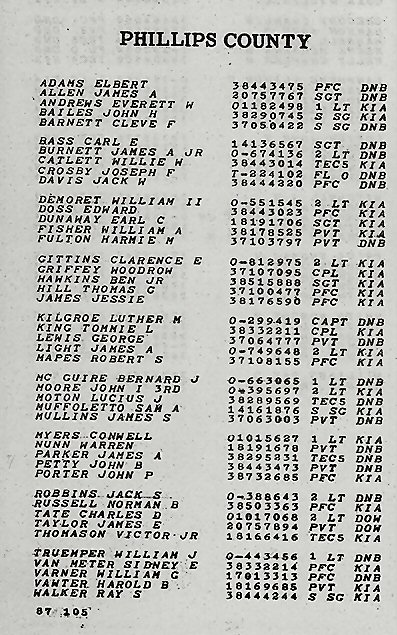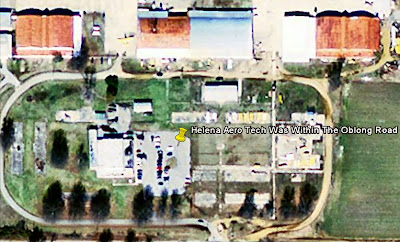BY LARRY BINZ
THE DAILY WORLD
West Helena was planned, platted and dedicated by E.C. Hornor and his cousin, John Sydney Hornor, on June 21, 1910. West Helena became an incorporated city on May 12, 1917. This area was known at that time as the Clopton Plantation.
The 100th anniversary of the founding of the city of West Helena would have passed had it not been for Walter L. Morris Sr. and Elmer W. Hornor Sr., the surviving grandchildren of Edward C. Hornor, calling attention to this occasion.
The first cousins traced their linage back to Walter's mother, Leonora Hornor Morris and Walter L. Morris and Elmer's to Edward Tully and Hattie West Hornor.
 |
Walter Morris Sr. (second from left) and Elmer Hornor (second from the right), the last surviving grandchildren of the founders of West Helena, and their sons, Walter Morris Jr. (left) and West Hornor gathered June 21 at the historic marker at the West Helena Public Library noting that West Helena was platted on June 21, 1910. LEFT: Walter Morris Sr. looks at a copy of the plat – the document that outlined the territory that became West Helena on June 21, 1910. The town was incorporated in 1917. |
Morris and Hornor paused to reflect on the history of West Helena as they met with their sons, Walter L. Morris Jr. and Elmer West Hornor Jr., by the marker near the West Helena Public Library that gives a brief history of West Helena.
The site is west of Helena and also west of Crowley’s Ridge. The plans for the city called for an industrial area in the center with residential areas to the east and west.
The developers provided sewer and water service and sidewalks. The city was named "West Helena" because at that time the rail freight rates were much lower east of the Mississippi River than to the west of the river.
Because of the connection with Helena, West Helena had available the east side freight rates. E.T. "Tully" Hornor served as mayor of West Helena in the late teens or early 1920s.
At that time this area was primarily involved in timber harvesting. As the land was cleared, it was placed in cultivation. It is reported that during the 1910s to the 1930s there were 21 sawmills between Missouri Street in Helena and Helena Crossing. In the late 1920s the Encyclopedia Britannica said Phillips County was known as the "Hardwood Capital of the World."
Along with the city's development a streetcar line (the Interurban Traction Co.) was constructed to connect West Helena with Helena. At that time it was necessary to make deep cuts through the ridge to construct the line.
The route began in West Helena at Washington and Plaza (where Chicago Mill & Lumber Co. was located.) It proceeded on Plaza through what is now the center green, through Midland Heights by Waverly Woods, the Fern Hill Fire Station, down Oakland Avenue's center green, east of Perry Street, south on College, down Porter Street to Cherry Street, south on Cherry to Missouri, west on Missouri and joined with Biscoe Street.
The line ended at what is now the location of Mid-Delta Community Services. There the streetcars turned around. When the line was built there was no road adjacent to it. That came later.
The Interurban Traction Company ceased operation on Aug. 6, 1933. The Interurban operated closed streetcars during the winter months and open cars during the warmer months. Each car operated with a motorman and conductor who collected fares. The fare was 10 cents.
On that date Twin City Transit Company began bus transit service to provide transportation between the two cities. At one time the transit company had about 25 buses. It operated on a schedule of 20 minutes between buses.
The route it followed was similar to that of the streetcar line. At a later time a route was opened from downtown Helena to North Helena. The fare was increased in the early 1950s to 25 cents.
As more and more cars were sold, the traffic decreased to where its revenue was no longer sufficient to operate. Twin City Transit Company ceased operation on Dec. 31, 1974. Many of the employees had long years of service, having been employed by both firms.
Several businesses that date back for many years in Helena and West Helena are:
• West Hornor Motor Company was created by M.E. West and Edward Tully Hornor in August 1924 to have an automobile franchise for the sale of Chevrolets. Elmer West Hornor and his son, E. West Hornor Jr., are current owners of the automobile agency.
• H&M Lumber Co. was opened for business on Jan. 1, 1961 on Plaza Street adjacent to serve the community's building material needs. Walter L. Morris Sr. and his cousin, the late Lawson D. Hornor, created it. Walter L. Morris Jr. joined H&M after graduation from the University of Arkansas in 1980 and is president of the firm. His actual service began in 1968 as a part-timer.
• West Helena Furniture has been in business since 1924 and is the oldest continuous business in West Helena. The late Jesse Porter Sr. started the business at Third and Plaza across from where Southern Bancorp is located today. One of his two sons, Riley Porter, runs the business. Porter, a brigadier general and commander of the Arkansas Air National Guard, said the store has been relocated twice. It has been at the corner of Sebastian and Plaza since 1966.
• Sibley Supply has been in business since 1960 on Plaza. Charles Sibley, the founder, said he acquired the industrial supply business formerly owned by A.S. Kelly.
• Southern Hardware, located on Sebastian across from Exxon Circle N and H&M Plaza, was established in 1914 as Lewis Supply Co. in Helena. T.G. Miller purchased the company in 1952 and has remained the owner since that time. Southern Hardware moved from Helena to West Helena in 1964.


















